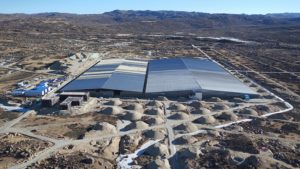 “Scientists have long known the Crab Nebula [is] a very energetic astrophysical object …. But recently, [they] discovered it is even more energetic than they thought. Using an array of state-of-the-art detectors on … the Tibetan Plateau, a team … detected light particles with … 10 times the energy of a Ping-Pong ball bouncing off a paddle,” an article in Scientific American dated July 8, 2021, says (read it here).
“Scientists have long known the Crab Nebula [is] a very energetic astrophysical object …. But recently, [they] discovered it is even more energetic than they thought. Using an array of state-of-the-art detectors on … the Tibetan Plateau, a team … detected light particles with … 10 times the energy of a Ping-Pong ball bouncing off a paddle,” an article in Scientific American dated July 8, 2021, says (read it here).
This stunning observation was made using the Large High Altitude Air Shower Observatory (LHAASO). To figure out what that is, I went straight to Wikipedia (here), which explains it’s 14,470 feet above sea level, covers 360 acres, and has three huge underground observing pools that contain telescopes linked to Cherenkov radiation detectors.
I’m curious how you build huge underground swimming pools at the altitude of Mt. Rainier’s summit in the middle of nowhere (i.e., Tibet). Answer: By building a road to it (see photo below). I gather China’s government paid for this thing.
Curiosity is a strong motivator, and needs to be, because scientific curiosity is expensive.
“The LHAASO results are important because they measured the spectrum of the Crab Nebula [photo above] in a new energy regime not explored by any previous instrument,” says Rene Ong, an astrophysicist at the University of California, Los Angeles, not involved in the research. (This sounds a bit circular to me; i.e., this instrument had to be built because nobody had one.)
“These events are extreme and almost beyond imagination from any point of view,” says Felix Aharonian, a co-author of the new paper.
That doesn’t really tell me what what looking at here. Maybe this does:
“The rotation of the pulsar generates an outward wind made of pairs of electrons and their antimatter counterparts, positrons, which then interact with the surrounding nebula to create shock waves and a natural particle accelerator …. When accelerated particles finally gain the energy to escape, some bump into massless, low-temperature photons from the cosmic microwave background and pass a significant part of their energy on to these particles of light. The photons then dash outward, with some heading straight to Earth, bringing with them important information about the Crab Nebula itself.”
And that information is?
“So far, the 2.3-PeV electron scenario is ‘allowed by classical electrodynamics and ideal magnetohydrodynamics but very, very close to the theoretical limit,’ Aharonian says. The acceleration efficiency is close to 100 percent. Considering the fact that the rotation of the pulsar is the only energy source and that the acceleration process is so complex, ‘it’s really surprising nature’s accelerator works at such high efficiency, as if it was an ideally designed machine,’ he says, ‘except that no one really designed it.'”
It could be he blew it. Maybe God designed it, and maybe this is final, irrefutable proof that God exists. But that’s not science anymore; it is, and always will be, a matter of faith. Maybe this is the closest intersection of science and religion you’ll ever see, ironically brought to you by an atheistic communist regime.
